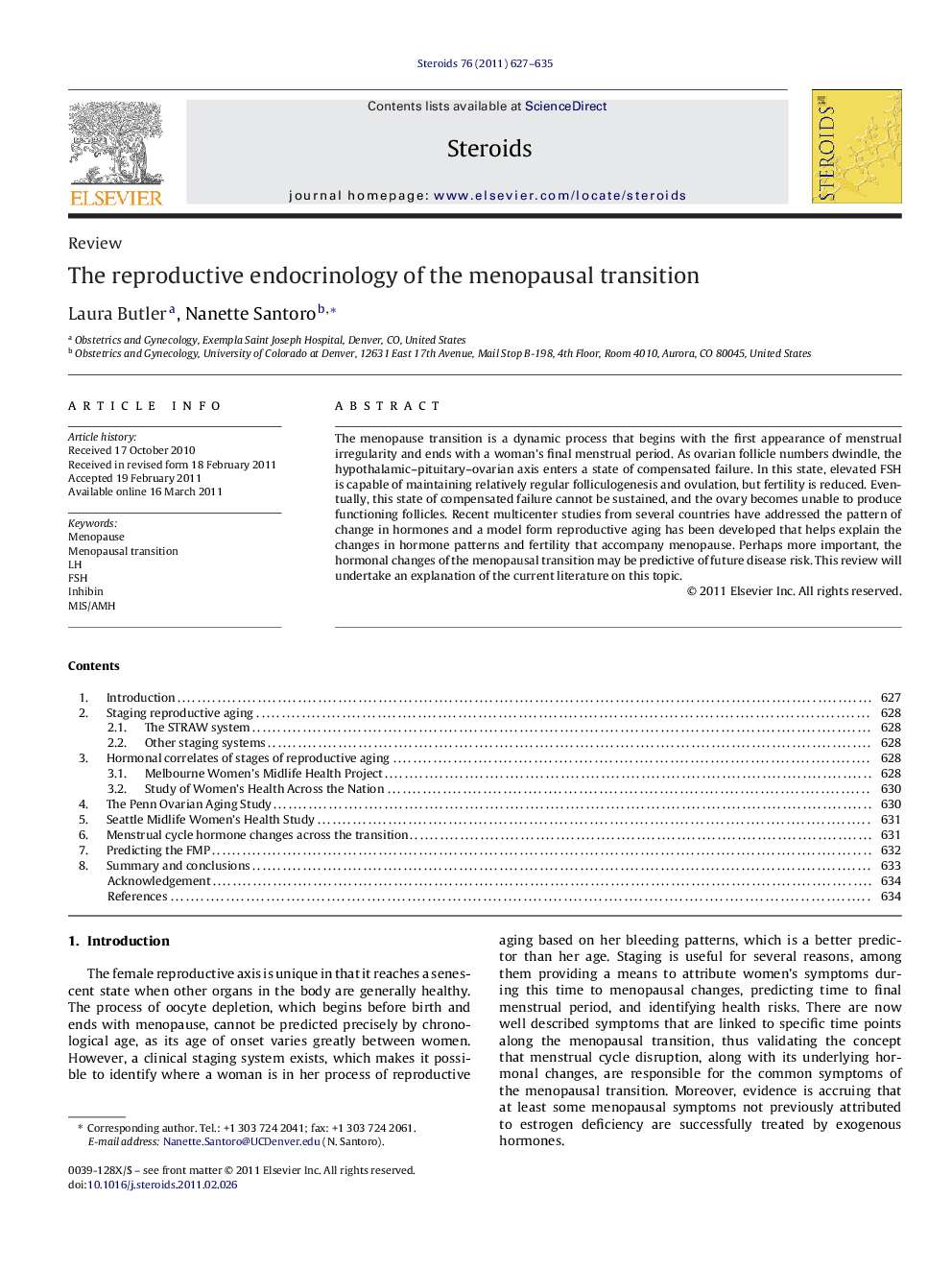| Article ID | Journal | Published Year | Pages | File Type |
|---|---|---|---|---|
| 2028662 | Steroids | 2011 | 9 Pages |
The menopause transition is a dynamic process that begins with the first appearance of menstrual irregularity and ends with a woman's final menstrual period. As ovarian follicle numbers dwindle, the hypothalamic–pituitary–ovarian axis enters a state of compensated failure. In this state, elevated FSH is capable of maintaining relatively regular folliculogenesis and ovulation, but fertility is reduced. Eventually, this state of compensated failure cannot be sustained, and the ovary becomes unable to produce functioning follicles. Recent multicenter studies from several countries have addressed the pattern of change in hormones and a model form reproductive aging has been developed that helps explain the changes in hormone patterns and fertility that accompany menopause. Perhaps more important, the hormonal changes of the menopausal transition may be predictive of future disease risk. This review will undertake an explanation of the current literature on this topic.
► The menopause transition does not involve a progressive decline in estrogen; there is much evidence of intermittent ovarian function and some evidence of increased unopposed estrogen exposure. ► The menopause transition is divided into two chief stages: the early transition, in which menstrual cycles occur at least once every 3 months, and the late transition, which entails at least 60 days of amenorrhea. ► FSH and estradiol are the primary biomarkers that have been used to track the process in clinical samples of women; however, newer markers such as the inhibins and Mullerian Inhibiting Substance (MIS, or anti-Mullerian Hormone, AMH) may prove more valuable predictors of time to menopause. ► The initial detectable event in the transition is a critical reduction in ovarian reserve, which leads to elevated FSH, shorter follicular phases and intermittently elevated estrogen. ► As women progress to the latter stages of the transition, traditional symptoms of estrogen deficiency become apparent.
